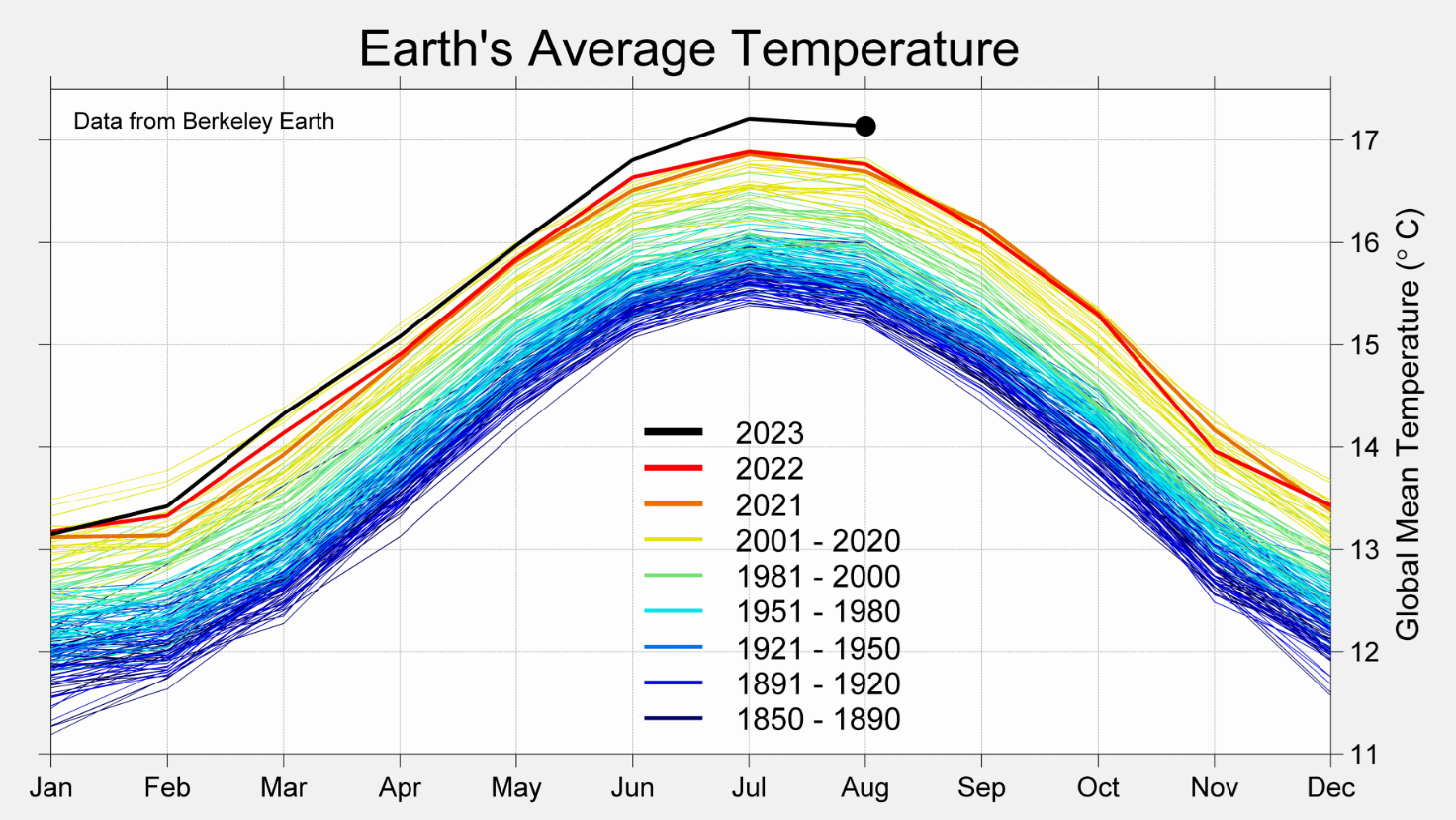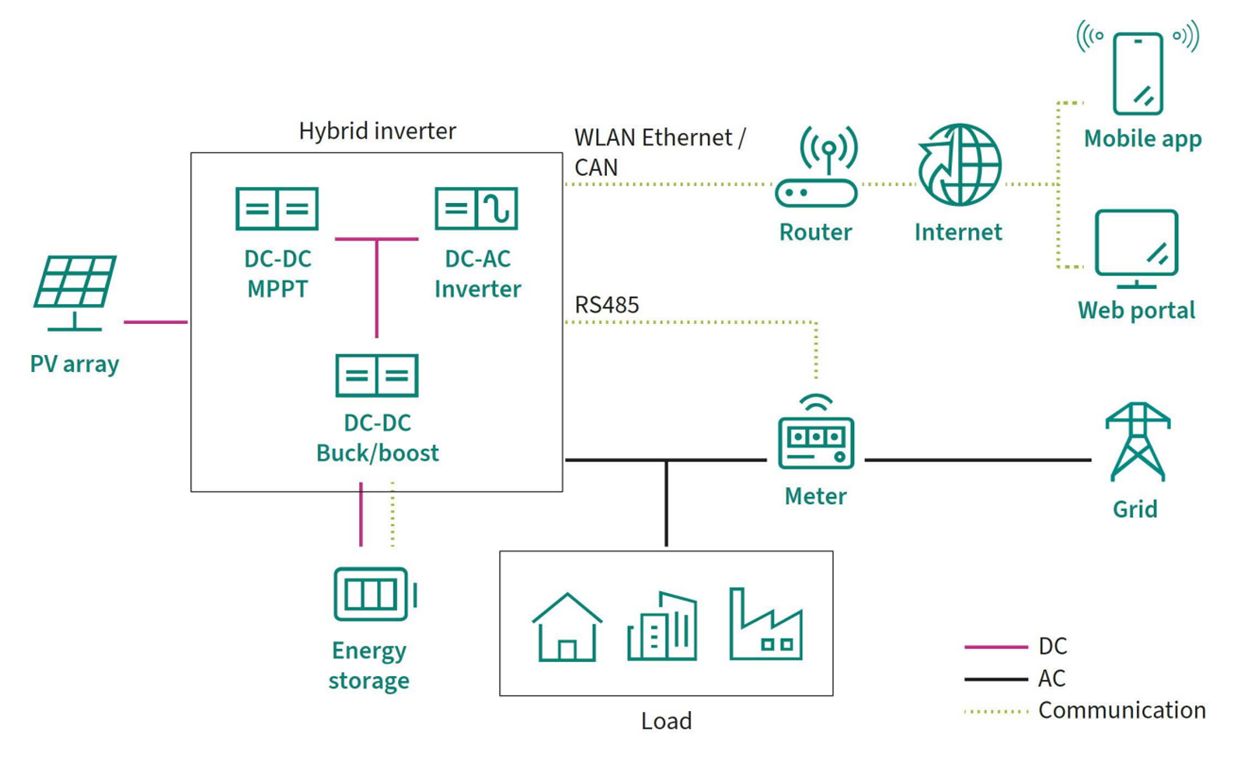Empowering a Green Energy Transition
Smarter Use of Renewable Power to Fight Climate Change

Image Source: AREE/Stock.adobe.com
By Alistair Winning for Mouser Electronics
Published November 22, 2023
As the earth faces the imminent risk of surpassing crucial temperature limits, the need for intelligent and efficient use of renewable energies is at an all-time high. Rapid technological advancements are making their mark amid significant international agreements and geopolitical scenarios. These innovations, including devices like hybrid inverters, are not simply complementing policy efforts but are key in advancing the renewable energy sector. As essential enablers, these devices facilitate the adoption of renewables, helping diminish dependence on fossil fuels. Hybrid inverters, for instance, are proving to be game changers, actively driving the discourse on renewable energy use. By seamlessly integrating various green technologies, these advanced electronic devices are accelerating the adoption of sustainable practices among consumers and the larger industry.
Policies Propelling Change
In 2015, 196 nations embraced the Paris Agreement, aiming to restrict global warming to 1.5°C over pre-industrial levels, as exceeding this could intensify climate adversities. This 1.5°C goal denotes a long-term average; however, projections suggest 2023 might touch this limit. Specifically, Berkeley Earth predicts a 99 percent chance of 2023 being the hottest year recorded (Figure 1) and a 55 percent probability of hitting the 1.5°C mark.[1] The World Meteorological Organization estimates a 66 percent chance of this occurring between 2023 and 2027.[2]
To achieve the 1.5°C target, the United Nations Intergovernmental Panel on Climate Change (IPCC) emphasizes peaking greenhouse gas emissions by 2025, with a 43 percent reduction by 2030. Carbon dioxide, which represented 64 percent of emissions in 2019,[3] is the primary concern. Strategies like adopting renewables, electrifying transport, and minimizing industrial fossil fuels are pivotal.

Figure 1: 2023 is set to become the warmest year on record and has a better than even chance of becoming the first year to breach the IPCC’s 1.5°C threshold. (Source: Berkeley Earth/https://www.berkeleyearth.org/)
Adoption of Green Technology Is Vital
With governments accelerating their ability to generate renewable power at scale, looking at the other side of the equation is also necessary. Reducing demand for electricity from the grid would also go a long way to minimize our reliance on fossil fuels. This could involve both using more energy-efficient products and encouraging consumers to generate and use their own electricity. Governments around the world have tried to facilitate these objectives by restricting the sale of inefficient products and offering incentives to consumers to promote domestic renewable energy generation.
Fortunately, getting consumers to adopt one green technology often leads them to invest in more. A survey from the UK electric vehicle (EV) charging point app Zapmap found that 4,358 of its EV-owning customers were seven times more likely than the rest of the population to have solar panels installed at home.[4] Over 10 percent of respondents also had domestic energy storage, and 72 percent had a smart meter. Buying an EV is often the entry point for owners to look at other ways of using green technology (Figure 2). Making that process more accessible and integrated should accelerate the adoption of multiple sustainable technologies.

Figure 2: When consumers buy EVs, there is a much greater chance than average they will also install other energy-efficiency technology. (Source: petovarga/stock.adobe.com)
Soon, we could see a scenario where households and small businesses charge domestic and EV batteries using solar energy throughout the day and then, in the evening, when demand and payment are highest, feed excess energy into the electrical grid. The storage systems could then charge again using cheap grid energy through the night to be ready for the next day. In addition to decreasing electric bills, this process could help balance supply and demand in the grid.
Hybrid Inverters Enable Smarter Power
One of the most important components in photovoltaic (PV) energy systems is the inverter, which converts the generated DC power to AC energy used by appliances or fed into the electrical grid. For example, in a typical solar power design, a string of solar panels is connected in series to increase the output voltage. The energy from the string feeds into a DC/DC converter, which converts the variable panel output voltage into a stable, fixed DC voltage that the inverter can use. This DC-DC converter also supports a technique called maximum power point tracking (MPPT), which ensures the panels always operate at the highest power level.
Hybrid inverters are intended to make PV systems more efficient and flexible at lower overall cost. This is achieved by integrating a DC/DC converter for battery charging and discharging, which removes power conversion steps, saves energy, and reduces component costs compared to the traditional AC-coupled storage system (Figure 3). Hybrid inverters are mainly used in residential and smaller-scale commercial market segments. For larger-scale projects that require a DC-coupled battery storage system, separate battery inverters are the optimal solution.

Figure 3: Rising self-consumption pushes designers toward a hybrid architecture supporting built-in energy storage. (Source: Infineon Technologies)
Hybrid inverters were already a predicted megatrend for the power industry, but the actual speed of adoption has accelerated in recent years. According to Markus Hermwille, Head of Application Management and Application Marketing IPB, Infineon Technologies, “In Germany, for example, 75 percent of all photovoltaic battery systems under 20kWh that were sold in 2022 were DC coupled through a hybrid inverter. In comparison, only 45 percent of these installations had a hybrid inverter in 2019. Going forward, that share of hybrid inverters will grow even further. Hybrid inverters will also start to take noticeable market share in higher power classes of up to 100kW."[5]
Practical Hybrid Inverter Design
When designing a hybrid inverter, the three conversion stages are vital to the system's overall efficiency. The input DC-DC converter (booster) requires only a simple single-boost topology to convert the variable string supply to a fixed voltage of around 600V for domestic systems or 1000V for larger systems. Devices for this type of conversion need blocking voltages of 650V or 1200V, respectively, as well as high switching speeds to create efficient and lighter designs.
The DC-DC stage for battery charging/discharging typically requires a two-level buck/boost topology. A non-isolated bi-directional DC-DC converter will normally be used for high-voltage batteries, and an isolated bi-directional DC-DC converter for low-voltage batteries.
The final DC-AC converter stage can use either a two-level or three-level topology. For single-phase designs, many engineers use highly efficient and reliable inverter concept (HERIC) topology, while for three-phase designs, engineers may opt for a three-level NPC1/NPC2 topology for its higher efficiency. Three-level NPC1 topology is better suited for switching speeds of over 20kHz—even for oversized solar panels—while the three-level NPC2 topology is the most suitable topology for switching speeds under 20kHz.
Conclusion
While governments and NGOs worldwide are moving as quickly as possible to increase utility-scale renewable generation, consumers can also do their part to cut our reliance on fossil fuels by using solar panels to generate electricity. Research has shown that investing in one green technology often acts as a gateway for adopting more, and hybrid inverters are the ideal way to make those technologies work together seamlessly.
Sources
Robert Rohde. “August 2023 Temperature Update.” Berkeley Earth, September 13, 2023. https://berkeleyearth.org/august-2023-temperature-update/.
World Meteorological Organization. “Global Temperatures Set to Reach New Records in Next Five Years.” Press Release, May 17, 2023. https://public.wmo.int/en/media/press-release/global-temperatures-set-reach-new-records-next-five-years.
IPCC. “The Evidence Is Clear: The Time for Action Is Now. We Can Halve Emissions by 2030.” Press Release, April 4, 2022. https://www.ipcc.ch/2022/04/04/ipcc-ar6-wgiii-pressrelease/.
Zapmap. “EV Drivers Seven Times More Likely to Have Solar Panels on Their Home.” Press Release, September 5, 2023. https://www.zap-map.com/news/electric-cars-gateway-clean-energy.
[5] Markus Hermwille. Personal communication.